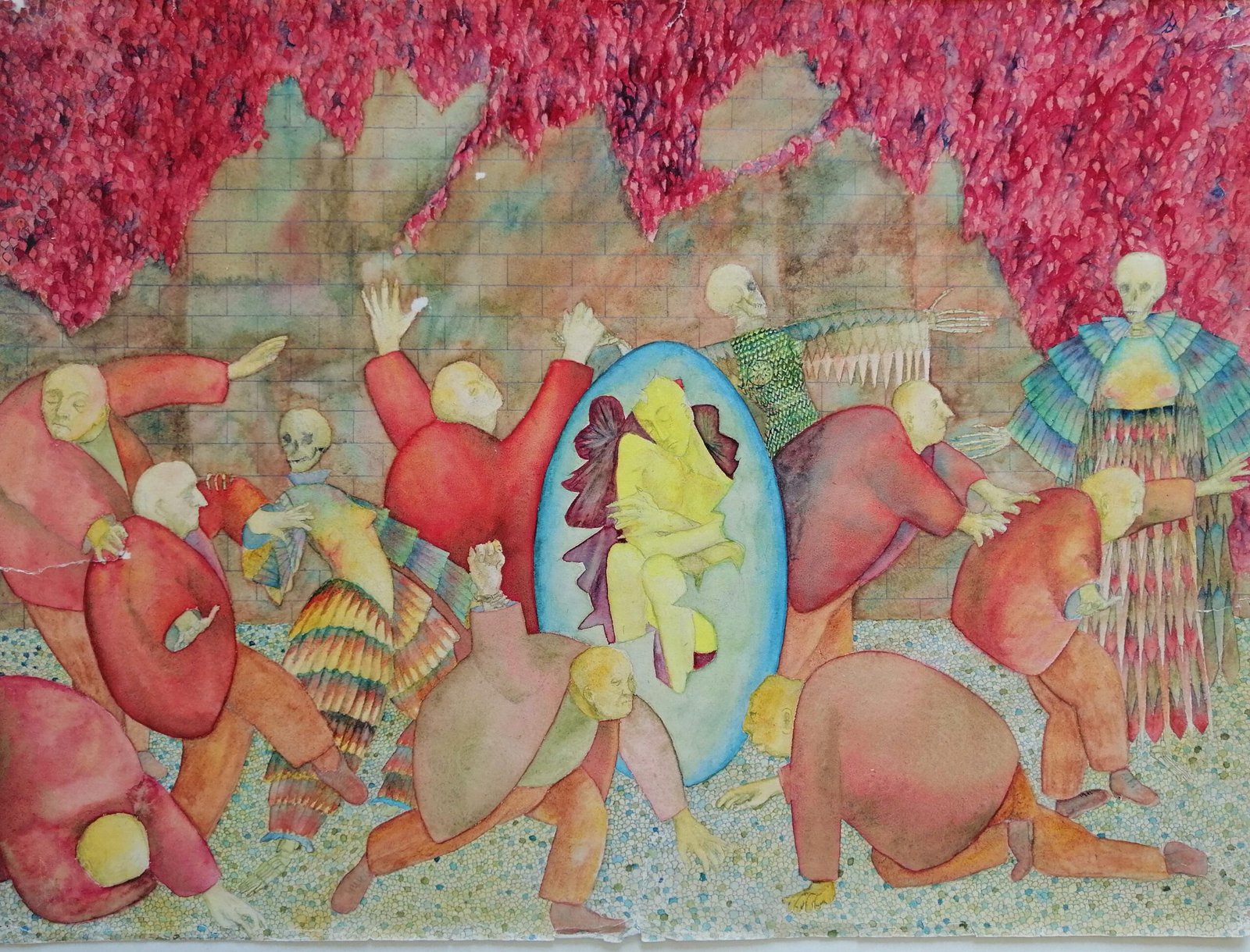 My last blog ended with a picture of an angel holding up the world, not a picture to stimulate the brain cells in this secular world. I like it because it challenges the secular mind. If you want to be secular you need to know why. So study the different. I also like to contemplate the above picture by the Dutch artist M C Escher. But of that later.
My last blog ended with a picture of an angel holding up the world, not a picture to stimulate the brain cells in this secular world. I like it because it challenges the secular mind. If you want to be secular you need to know why. So study the different. I also like to contemplate the above picture by the Dutch artist M C Escher. But of that later.
I have just read ‘The Science Delusion’ by Rupert Sheldrake. It is a reply to Richard Dawkins’ book ‘The God Delusion’. Both authors have serious scientific credentials and the right to claim our attention. Many people, it appears, agree with Dawkins’ materialist view and are pleased to have such an accomplished writer demolishing the beliefs and practices of religions and all thoughts that go in that direction. There are also people who are appalled at what they consider the dogmatism, fundamentalism, and perverse judgement of the Dawkins’ tribe.
These two groups seem to have little common ground. For many in the second group the word ‘spiritual’ has an objective meaning as a necessary concept for understanding the world. I will refer to group 1 as DT (Dawkins’ Tribe) and group 2 as SHOM (Spiritual Has Objective Meaning)
The problem seems to be a question of evidence. But evidence of what? Sheldrake points to a number of experiences capable of scientific investigation which DT insists on ignoring. So the scope of research is one difficulty. There is another problem not easily resolved.
How does science or knowledge come about? The scientist gets involved in some phenomenon, experiments with it then steps back and says to him/herself, ‘What have we here? How does this fit in with the picture I have?’ Then possibly new connections with other phenomena emerge or a new law gets stated. The process applies to quite everyday matters as well, though usually with less rigour. Sheldrake deals with the situation where the new research doesn’t fit the accepted picture. But now I am interested in the moment when ‘the stepping- back’ happens.
Nature and the world we investigate don’t immediately tell us the connections or the laws that science produces. Millions had seen apples fall and planets shine but it took a Newton to make the connection and pronounce the law. Einstein comes along and makes new connections and pronounces a new law.
So what is happening when these eminent writers accuse each other of delusion? Let us not enter into the argument to discover who favours DT and who favours SHOM. Let’s rather ‘step back’ and try to understand how this division arises. Disagreement can come from lack of knowledge on one side or the other, from prejudice, self-preservation, education and background (which induce one to favour or reject a particular view) or sheer blindness.
The scientist when s/he makes a judgement is supposed to eliminate from his mind all these distortions and only hold on to what is based on universally agreed facts. This critical judgement has all got to happen in the ‘stepping-back’ act. The disagreement makes it clear that the problem is not usually with the evidence but lies rather with the thinking mind which makes the connections. The notion that people are hard-wired to hold certain beliefs is too infantile to spend time on (although it is surprising how much infantilism exists in some research centres). If we try to grasp the moment of ‘stepping back’ of the scientist in the last 3 or 4 centuries I believe we can see a shift of attention. The nature of Galileo’s or Newton’s attention was different from that of a 20th century scientist, as it was different from that of a Greek or mediaeval student of nature.
DT seems to present the achievements of modern science as the firm basis for atheistic materialism. I think it is equally provable that science has taken a materialistic slant because that shift belongs to a general tendency in western culture.
What is the source and nature of that shift? The question obliges us to investigate these moments of consciousness in the ‘stepping back’. Has that consciousness always been the same? The assumption is usually ‘yes’. For the materialist, consciousness arises out of material processes and can only be understood as a product of brain activity. This is where the thinking gets foggy and blurred. If that were the case the differences we are examining would be reduced to differences of physiological brain patterns and processes. It would be difficult to see how mistakes in thinking are corrected. DT gets low marks in this area. Once we can see that consciousness is an invisible immaterial substance and not a by-product of physiology we may begin to understand how these eminent writers come to such contradictory views.
This blog is getting too long. What I fear most is making you impatient or bored. Before ending I need to say that the great change in western culture which began with the Renaissance was not only the beginning of modern science but also the awakening of a new sense of freedom. This fact is relevant to our theme.
So I stop now promising to pick up the trail soon. Before I come back study Escher’s drawing carefully. How many hands do you see? Your answer may indicate whether you are a DT or a SHOM!

